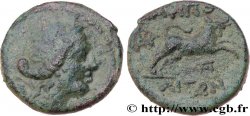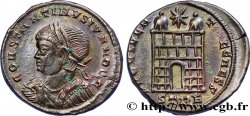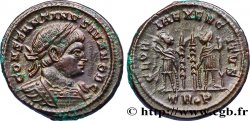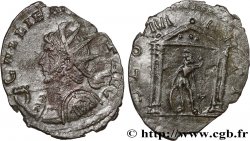v51_0112 - MACEDONIA - AMPHIPOLIS Tétradrachme stéphanophore
MONNAIES 51 (2011)
Starting price : 1 800.00 €
Estimate : 3 200.00 €
Realised price : 2 200.00 €
Number of bids : 2
Maximum bid : 2 750.00 €
Starting price : 1 800.00 €
Estimate : 3 200.00 €
Realised price : 2 200.00 €
Number of bids : 2
Maximum bid : 2 750.00 €
Type : Tétradrachme stéphanophore
Date: c. 148-147 AC.
Mint name / Town : Macédoine, Amphipolis
Metal : silver
Diameter : 30 mm
Orientation dies : 3 h.
Weight : 16,76 g.
Rarity : R2
Emission: 2e
Coments on the condition:
Exemplaire de qualité exceptionnelle pour ce type de monnayage, légèrement décentré au droit sur le bouclier, parfaitement centré au revers. Magnifique portrait d’Artémis. Revers de style fin. Extraordinaire patine de médaillier à reflets gris bleutés, mordorés, légèrement granuleux au revers
Catalogue references :
Predigree :
Cet exemplaire provient de la vente Weil du 20 octobre 2004, n° 66
Obverse
Obverse legend : ANÉPIGRAPHE.
Obverse description : Buste diadémé et drapé d'Artémis Tauropolos à droite, l'arc et le carquois sur l'épaule, placé au centre d'un bouclier macédonien orné d'étoiles.
Reverse
Reverse legend : LEG/.
Reverse description : de chaque côté d'une massue ; au-dessus, main tenant un rameau d’olivier ; au-dessous, un monogramme ; le tout dans une couronne de chêne fermée par un foudre.
Reverse legend : MAKEDONWN/ (LU)
Commentary
Mêmes coins que l’exemplaire de la vente Ars Classica XV, 1930, n° 541 (MN. 14, p. 20, n° 11a,pl. VI). Petite cassure de coin sous le A de MAKEDONWN. L’axe des coins pourrait être à 6 heures, la massue étant alors placée verticalement. L’exemplaire de MONNAIES XVIII, n° 60 s’est vendu dans un état similaire 2.460€ sur un maximum à 2.915€ avec neuf offres.







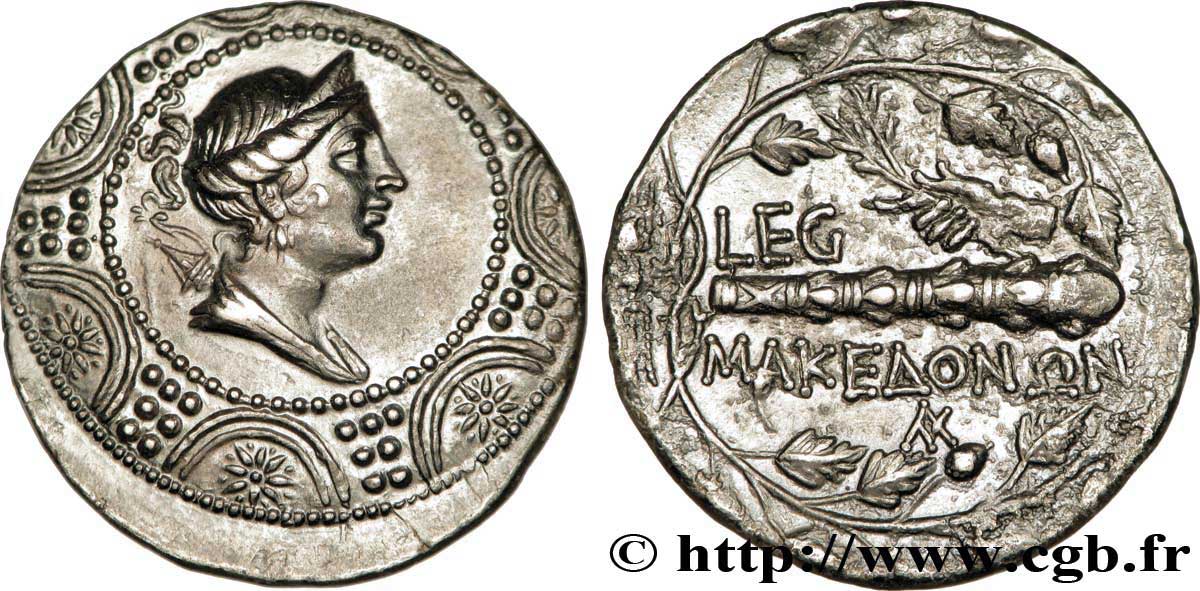
 Report a mistake
Report a mistake Print the page
Print the page Share my selection
Share my selection Ask a question
Ask a question Consign / sell
Consign / sell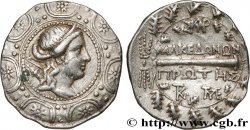
 Full data
Full data


